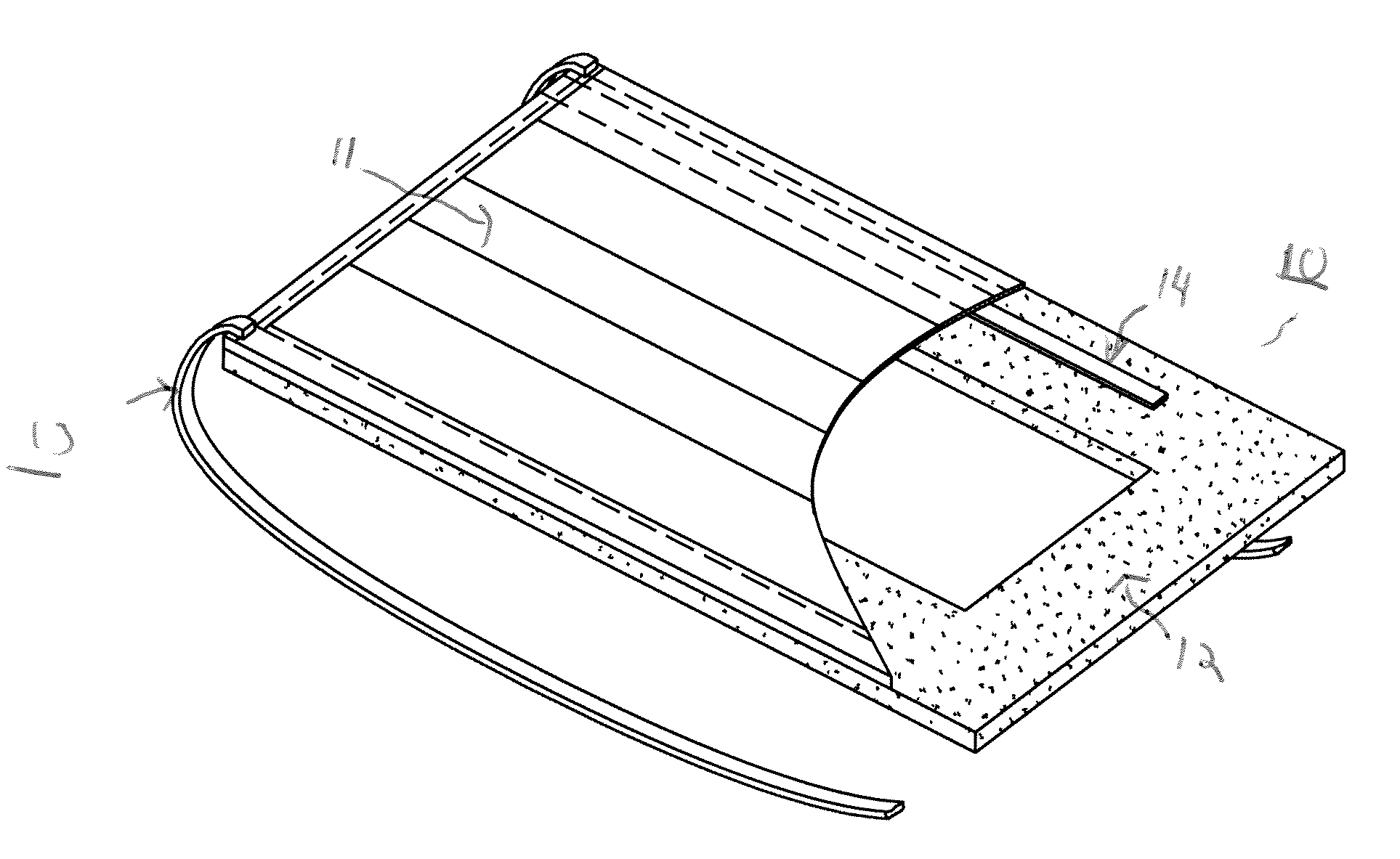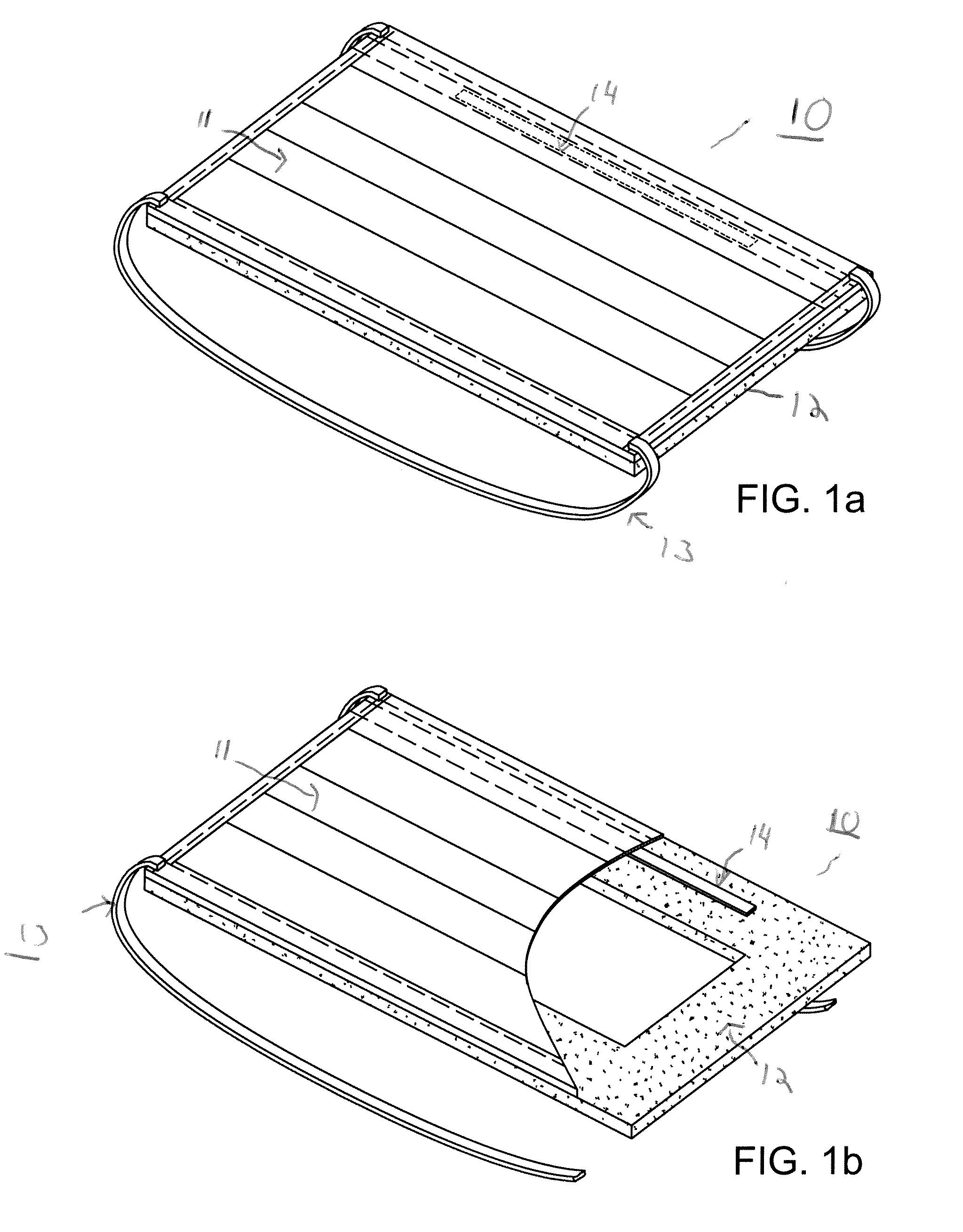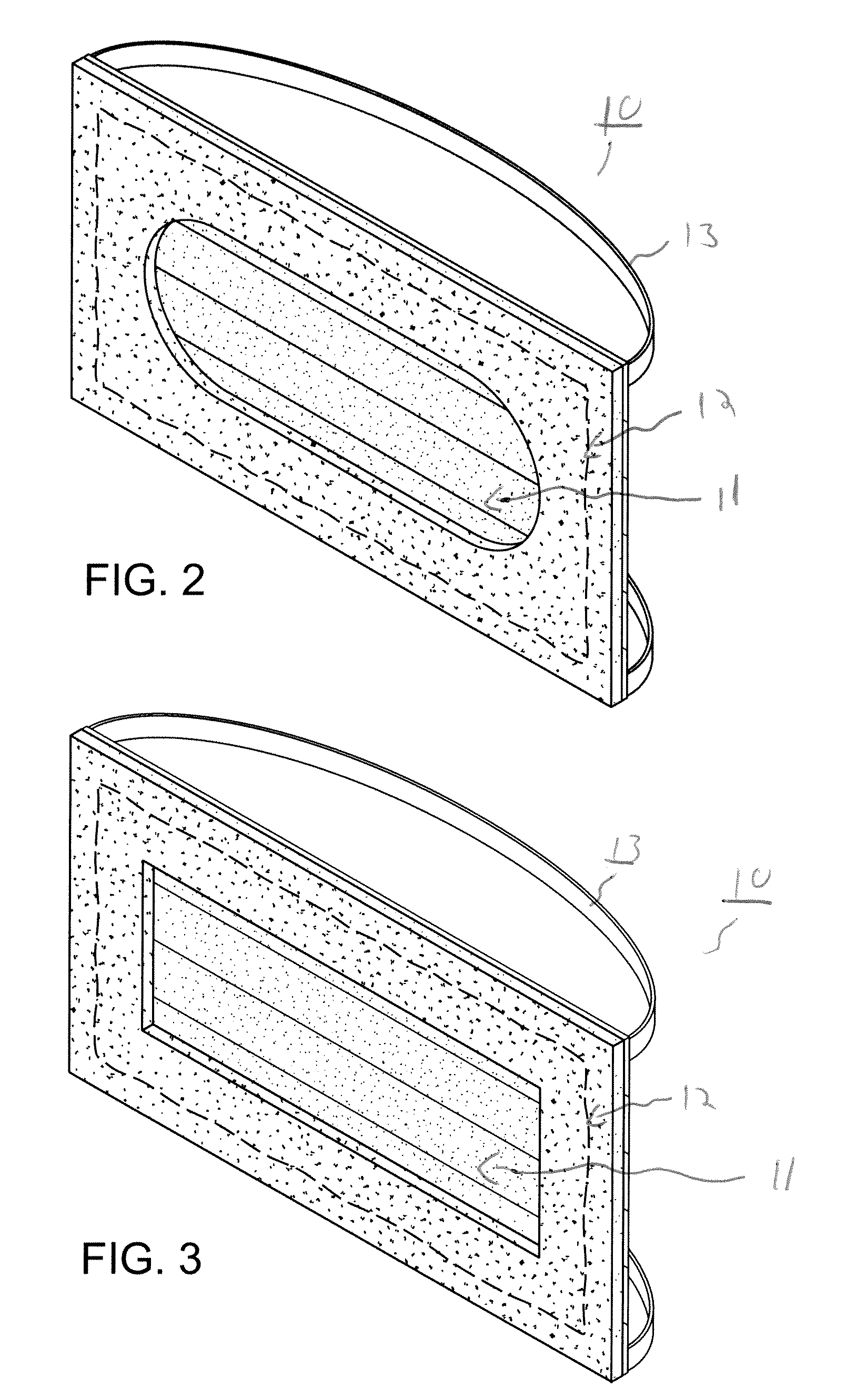Protective mask with breathable filtering face seal
a technology of mask and filtering face, applied in the field of protective masks, can solve the problems of difficult manufacturing of face masks, poor comfort of face masks designed to have excellent filtering properties, and little more than splash protection of face masks, etc., and achieves the effects of easy breathing, high filtration efficiency, and comfortable wear
- Summary
- Abstract
- Description
- Claims
- Application Information
AI Technical Summary
Benefits of technology
Problems solved by technology
Method used
Image
Examples
experimental examples
[0050]Facemasks prepared in accordance with embodiments of the present invention were tested for filtration efficiency, inhalation and exhalation resistance and microbiological performance. The facemasks tested contained a meltblown polypropylene filter body and a compressible gasket comprised of a triboelectric polypropylene media. In addition, the facemasks contained an outer cover scrim and a face side cover scrim made of spunbond polypropylene. The face side cover scrim contained Triosyn® T-50 iodinated resin powder adhered to its surface.
Filtration Efficiency
[0051]We determined whether facemasks produced in accordance with the present invention are N95 respirators. A filtering facepiece respirator that filters out at least 95% of airborne particles during “worse case” testing using a “most-penetrating” sized particle is given a 95 rating. There are nine classes of NIOSH-approved particulate filtering respirators available at this time. 95% is the minimal level of filtration tha...
PUM
| Property | Measurement | Unit |
|---|---|---|
| thickness | aaaaa | aaaaa |
| thick | aaaaa | aaaaa |
| thick | aaaaa | aaaaa |
Abstract
Description
Claims
Application Information
 Login to View More
Login to View More - R&D
- Intellectual Property
- Life Sciences
- Materials
- Tech Scout
- Unparalleled Data Quality
- Higher Quality Content
- 60% Fewer Hallucinations
Browse by: Latest US Patents, China's latest patents, Technical Efficacy Thesaurus, Application Domain, Technology Topic, Popular Technical Reports.
© 2025 PatSnap. All rights reserved.Legal|Privacy policy|Modern Slavery Act Transparency Statement|Sitemap|About US| Contact US: help@patsnap.com



